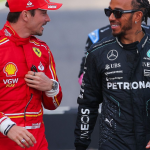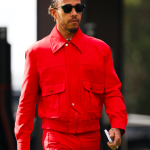
Why does Ferrari fail to produce quality content?
The Maranello team tried to replicate ''C'était un Rendez-vous'', disappointing expectations
June 16th, 2020
Ferrari has released a six-minute video entitled ''Le Grand Rendez-Vous'', a modern version of ''C'était un Rendez-vous'', the 1976 short film that sees a driver racing through the streets of Paris to arrive on time for the appointment with your girlfriend.
Since there was no possibility that Ferrari could recreate that identical race, the solution was found in the city circuit of the Principality of Monaco, where the Ferrari SF90 Stradale driver is the star of Maranello Charles Leclerc.
The criticisms were not long in coming: in addition to being accused of being a "soulless short" and "with a misrepresented plot", what bothered us most was that filming from the cameras mounted on the front of the ''red'' are too fluid and stabilized, unlike those of the original version - which instead came from a Mercedes - which had been successful precisely because of the little cinematic shots.
In general, although Ferrari is one of the coolest heritage brands in the world - so much so as to inspire a theme amusement park -, with the possibility of ranging from luxury to sport, taking advantage of its history and its mainstream aesthetics, it is not it seems to be able to fully exploit its potential: one of the most striking examples are the clothing collections, always without risk and not at all in step with the times. Another example is the aforementioned video, mocked on YouTube with comments such as "I am speechless, what did they smoke before producing it?" or "The Ferrari marketing team should go back to university"; actually there seems to have been no thorough planning, nor too much effort in developing content that, even considering the budget of the Ferrari brand, could have been much better. Instead it seems that the creators of the "red" have completely relied on the appeal of their driver and machine, without trying to add anything that could increase the quality of the product.
The use of post-production video stabilization is a tool usually used to hide the vibrations of the camera, but it is precisely in the case of videos relating to motorsport and speed that this "instability" is an added value to convey a sensation of reckless driving. For example, the production company that filmed the Bugatti Chiron speed record - which reached 490 km/h - added effects in post-production to give a greater sense of "shaking" in a clip that according to the directors was "lifeless".
The thing that is even more surprising is that the director chosen by Ferrari to shoot the short film is Claude Lelouch, the same as ''C'était un Rendez-vous'', which is why it is not possible to find a real reason for so much difference between the two final results. The only real similarity that the two films have in common are the omnipresent sounds of the engine noise and the constant screeching of the tires.
It is not the first time that the 1976 video has been taken by a car manufacturer: three years ago Ford had already produced one, also shot in Paris and also full of criticism because of the diversity with the original, although was a better version than the one shot by the Maranello stables.
Although ''Le Grand Rendez-vous'' gets noticed for worse details than the stabilization of the video - like Prince Albert's cameo or the perception that everything is extremely planned, see the empty streets and the fake applause at the arrival of the Ferrari in front of the Hotel de Paris - the film would not have received so many negative opinions if only a little more authenticity had been transmitted, an aspect that instead is totally personified by one of the characters of the moment, Charles Leclerc.

















